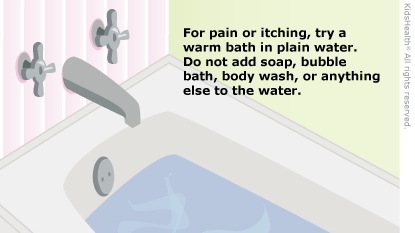A vaginal yeast infection happens when there is too much yeast (a type of germ) in the vagina. A yeast infection causes vaginal discharge, itching, and irritation. Yeast infections are treated with pills taken by mouth or with a cream that is put in and around the vagina.



Your child:

Why do yeast infections happen? Yeast infections happen when a fungus called Candida, which often lives quietly in the body, grows too much. This can happen, for example, in someone:
How do health care providers diagnose yeast infections? Health care providers diagnose a yeast infection based on symptoms and examination of the vagina. They may also send a sample of vaginal discharge (taken by wiping a swab inside the vagina) to the lab to be looked at under a microscope.
If my child has signs of another yeast infection, should we restart treatment? If your child gets better, then has signs of another yeast infection, talk to your health care provider before starting any treatment at home. This way, you can be sure that it really is a yeast infection and that they get the right medicines.